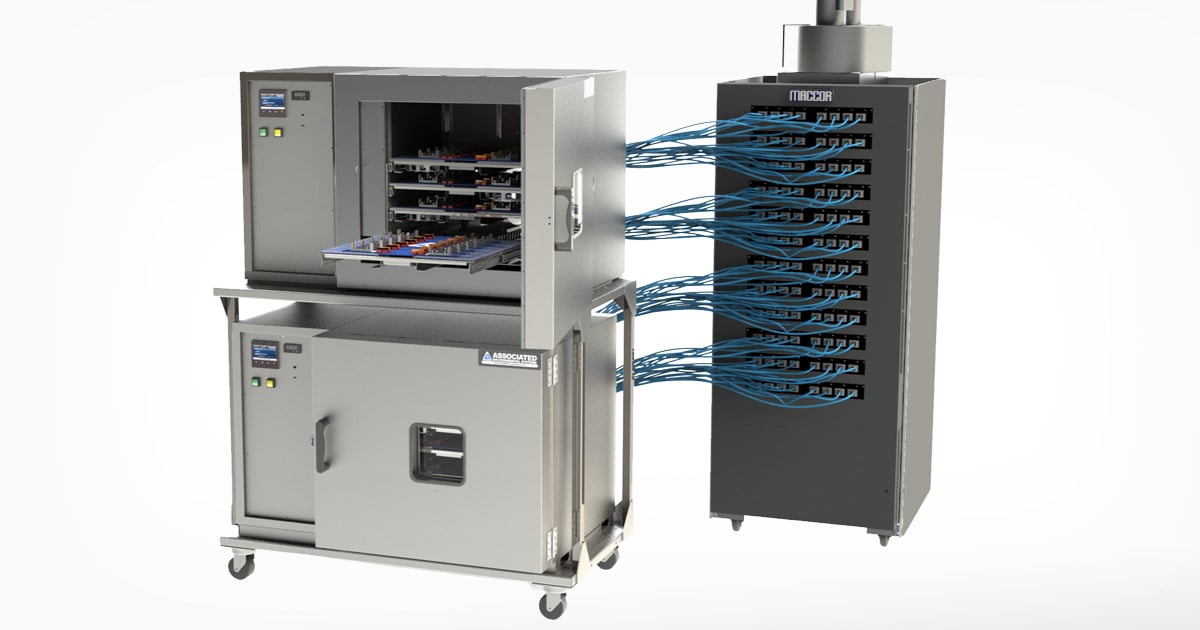When to Buy a New Environmental Test Chamber

A well-maintained test chamber can last for 10 years or more. That’s why we recommend working with a reputable manufacturer to establish a service plan to keep your lab running at full capacity. Part of your maintenance should be built-in plans for replacement because no matter how well you take care of your test chambers they will someday grow obsolete.
The time frame changes model to model, chamber to chamber. It’s important to keep tabs on how well they’re performing, even when you’re not actively testing. It will help inform your replacement decisions or help you identify areas of need as your requirements change.
These are some things to consider for deciding when to buy new environmental test chambers.
Replacing Test Chambers
Think of the first car you purchased. Chances are you invested heavily to make it last well past 100,000 or 150,000 miles. You changed the oil regularly, replaced the brake pads as required, and brought it in for annual inspections. At some point, the costs to keep it running either exceeded the price of a replacement car or the repairs grew so difficult and intricate that they weren’t guaranteed to work. Each time you took the wheel was a gamble.
The same scenarios play out with test chambers. As a rule of thumb (these numbers vary depending on use, model, and upkeep), after three years a test chamber will start needing replacement parts to retain performance. Well-maintained, older test chambers also tend to outlive the technology that turns them on and off.
That’s really where the replacement conversation begins. If the test chamber operates at the same level, but it carries a broken or obsolete digital controller, it doesn’t necessarily require a replacement. It can be retrofitted with the latest technology (such as AESONE CONNECT) at a lower cost than purchasing a new chamber. However, controllers require specific wiring and programming. For older chambers, the cost of labor and time it takes to retrofit may not be worth it for what ultimately will prove to be a short-term fix.
Another consideration is chambers depreciate over time, regardless of maintenance measures. After 10 years, they simply don’t run as efficiently or retain the same level as the parts degrade. Older refrigeration chemicals that drive the compressors are hard to obtain, making recharging difficult. If the test chamber isn’t coming close to hitting its original specs, it may not be a sign of anything but age.
Finally, performance, rather than age, is sometimes the biggest factor when deciding replacement. For example, your company may have purchased stock models. For steady-state conditions, it worked out fine, but as soon as you needed to test at the extreme temperature range ends the compressors were over-stressed. No matter how well you maintain the test chamber, you need a higher-performing model to complete your required testing.
Make Educated Decisions.
The decision to replace a test chamber or purchase a new one should be made in consultation with all the important parties. Talk to your team members to gauge your testing needs. Understand the standards you plan to meet. Communicate with your manufacturer to learn about the options available to you.
Keep in mind, too, that 10-year threshold. Many companies make the mistake of replacing a test chamber as a short-term solution without considering the future. You might find that investing in a higher-performing model will deliver a stronger ROI because it expands your testing possibilities while retaining its operation for a longer period of time.
We encourage you to read our test chamber buyer’s guide to learn every detail that goes into such an important purchase.
Associated Environmental Systems carries a wide range of stock and custom test chambers. Contact us with any questions, and ask about our service and support options.


